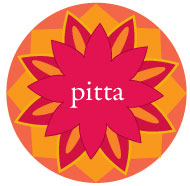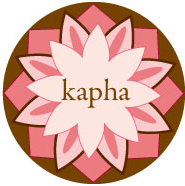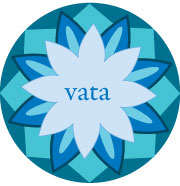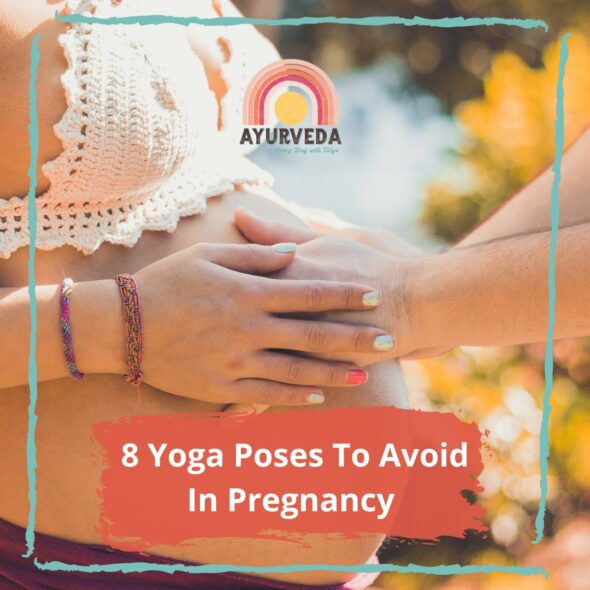
The world is ripe with new energy and there are plenty of pregnant mamas making their way out of lockdown. So we teamed up with guest blogger Michelle Finerty (and our friend at beYogi) to offer you this awesome post on 8 poses to avoid in pregnancy (and which poses to practice instead).
Tuning into a nourishing self-care routine during pregnancy is one of the best gifts you can give yourself and prenatal yoga can be a big part of that practice.
During pregnancy, there are a variety of changes going on physically, mentally, emotionally, and socially and many rules and theories of how to take care of yourself. It can all be very overwhelming; however, it does not have to be.
![]()
![]()
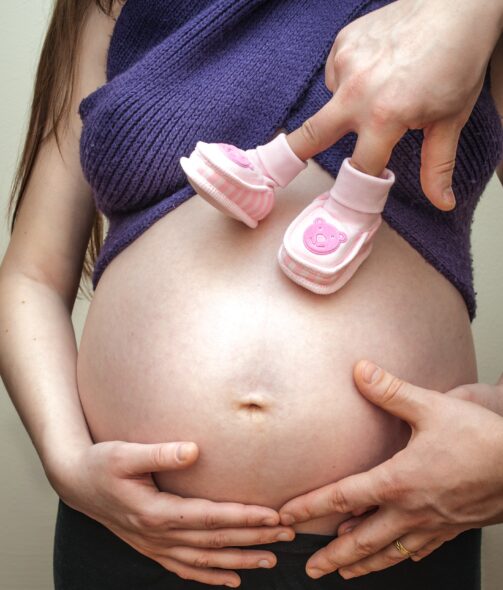
Pregnancy is a time to embrace all the amazing things your body is doing on a regular basis and connect to your baby with as much love and compassion as possible. With this in mind, it is important to know what kind of yoga poses are helpful to relieve stress, stretch and tone the body, and prepare for labor and delivery as well as what poses to avoid in this process.
To aid in this process, let’s delve into the most common poses to avoid as well as some viable alternatives.
Twists
It is best to avoid deep twists from the waist as throughout pregnancy, due to the baby growing the pelvic ligaments, mothers can become more prone to being overstretched to the point of tearing.
Two Twists To Avoid Are Crescent Lunge Twist And Supine Twist.
The main difference between the two poses is that Supine Twist involves twisting while laying down and Crescent Lunge Twist incorporates twisting while standing in a lunge. However, both are deep twists from the waist and can cause tension to build in the pelvic ligaments.
If you love twists and want a safer option, choose twists from the shoulder, such as a simple seated twist.
In this pose, you can sit cross-legged, bringing your left hand on the mat on your left side and your right hand to your left knee and gently look over your left shoulder. Hold for 3 breaths and switch sides.
Core
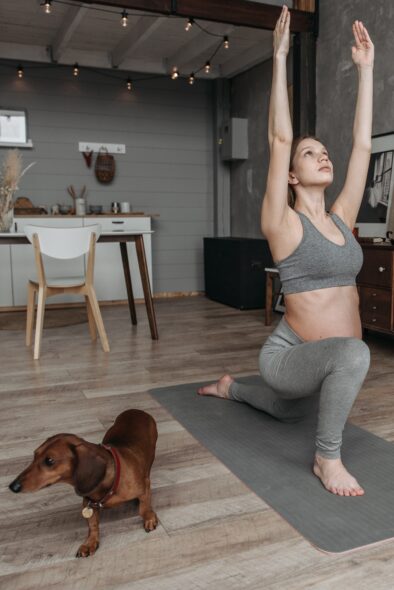
Due to the fact that the baby is taking up more space in the abdominal region, it is best to avoid core exercises such as Boat pose and any modified crunches like Eagle Crunches as those poses increase the risk of abdominal separation.
If the thought of not doing any core work sounds horrible, during pregnancy you can still work your side core muscles, the Obliques.
One of my favorite options for the Obliques is to do side leg lifts by laying on one side, either supporting your head in your hand or placing your forearm on the mat, and creating space between your head and shoulder. From this place, stack your legs and gently lift and lower your upper leg for 8-12 repetitions and switch sides.
Laying On The Stomach
Not only is it uncomfortable to lay on your stomach while pregnant, but it also can apply too much pressure to the baby and constrict breathing.
Two Poses To Avoid Are Cobra And Locust.
A good alternative to Cobra and Locust pose is Heart opened Hero pose.
To enjoy this pose, sit on your heels with your knees together, bring your hands to your lower back, and gently expand through your heart as you let your head fall back over your shoulders. If you have any neck discomfort, please draw your chin to your chest to protect the neck. Hold for 3-5 breaths and gently rise to an upright seated position.
Inversions
Due to the imbalance of weight, the pressure put on the spine and neck, and the reversal of oxygen and circulation it is best to avoid inversions such as headstand and wheel (unless you’re a very seasoned practitioner and have adequate support when practicing more advanced poses).
Modern Medical advice is to not do any physical exercises while pregnant that you did not do before becoming pregnant. With this in mind, if letting go of your yoga inversions is just too much on top of all of the other restrictions pregnancy brings, you can find relief with the support of a block or rolled-up blanket under the hips and spine in the following two beautiful alternatives.
Supported Bridge Pose and Legs Elevated Pose.
To embrace Supported Bridge Pose, lay on your back with your feet on the mat, hip-distance apart. As you lift your hips and spine off the mat, place a block or rolled-up blanket under your hips and lower back and gently allow those props to support your lower back in this pose. Hold for 3-5 breaths and slowly lower down one vertebra at a time after gently releasing the block or blanket.
To enjoy the benefits of Legs Elevated Pose, it is important to set up your space by bringing a chair and bolster or blanket to your yoga mat.
Laying on your back, place the bolster or blanket under your hips and place your calves on the seat of the chair. Allow your arms to open to the side and enjoy the pose for 30 seconds to two minutes.

As a mother-to-be…
It is so important to be able to take care of yourself and connect to the baby in a safe way to relieve any tightness, tension, and stress you may be feeling. Your mat and your yoga practice are a haven to retreat to for this exploration and it is essential to tune into your body and slow down during this process.
Flexibility, honesty, and compassion for yourself as a seeker embarking on this journey is enormously important. Not only is your own self-care a gift to yourself – it is necessary for the health of your loved ones. Starting on this path during pregnancy helps to make self-care a habit that will carry on during motherhood and the reality of motherhood is that you can only give as much love and care as you yourself are receiving.
As Janet Stone, international Vinyasa yoga instructor and inspiring mother to all says,
“I once had a daily two-hour practice. Now I practice from the moment my eyes open until they close. Sacred texts teach non-attachment, non-coveting, uniting opposites. Could there be a better teacher than children? Even if I slipped away to the Himalayas with an enlightened guru, I might not receive such constant opportunities to live my yoga.”
Disclaimer: Yoga is a marathon, not a sprint. When you take ownership of your journey, you will see powerful results that stand the test of time.
Knowing your Ayurvedic blueprint can help new mamas understand their body, mind, and spirit…
What your body looks and feels like when it’s balanced, as well as what tends to occur when it’s not. Keep reading to get a general idea, but if you’re unsure about your personal blueprint, make sure to take my free dosha quiz to learn more!
Taking an Ayurvedic approach to yoga will serve you in your post-partum months. Bookmark this blog for when you’re in that phase and let us know how you feel in the comments. Congratulations on becoming a mom!
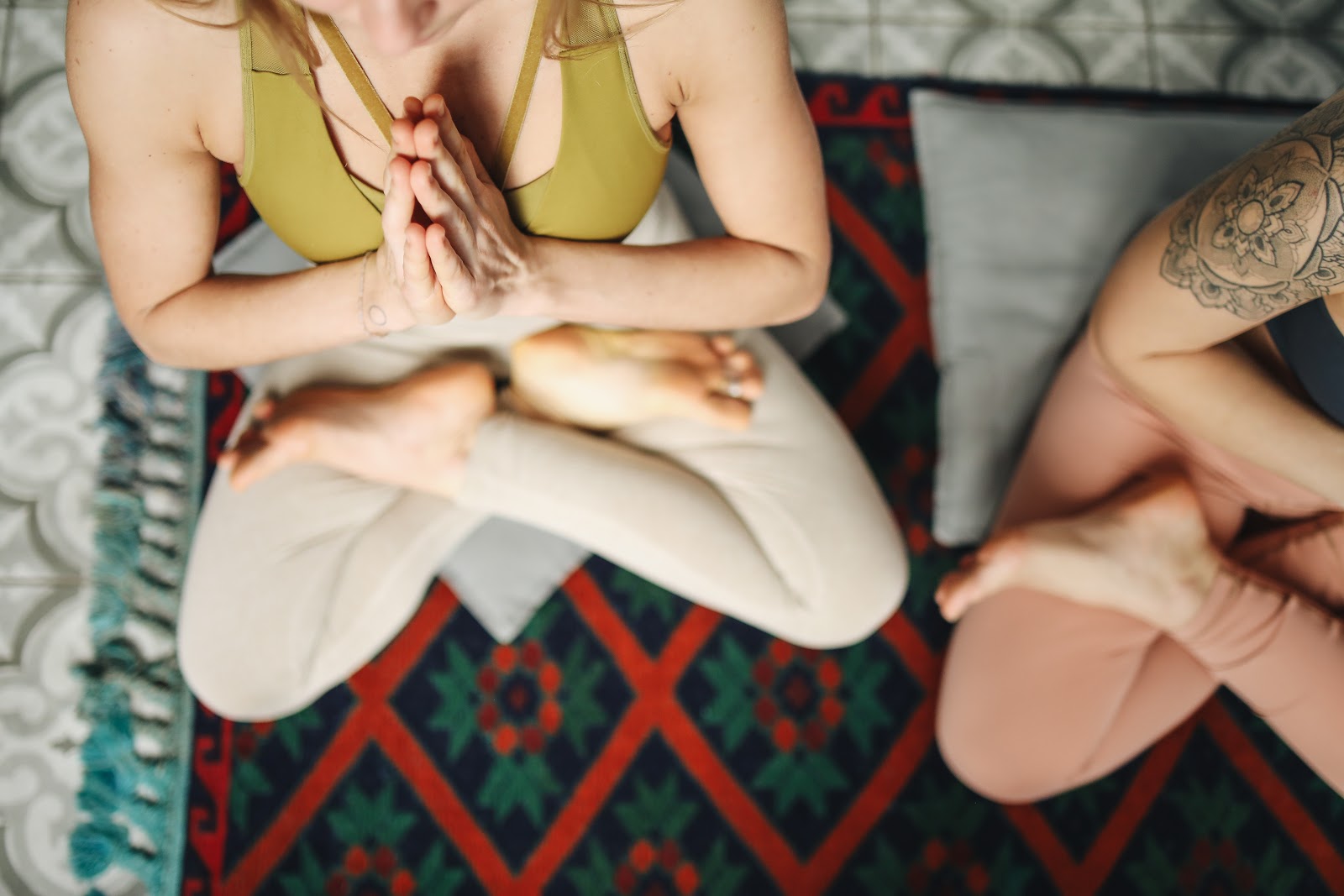
This blog post is sponsored by beYogi. Providing inspiration, education, and reliable yoga liability coverage to U.S.-based yoga teachers.

